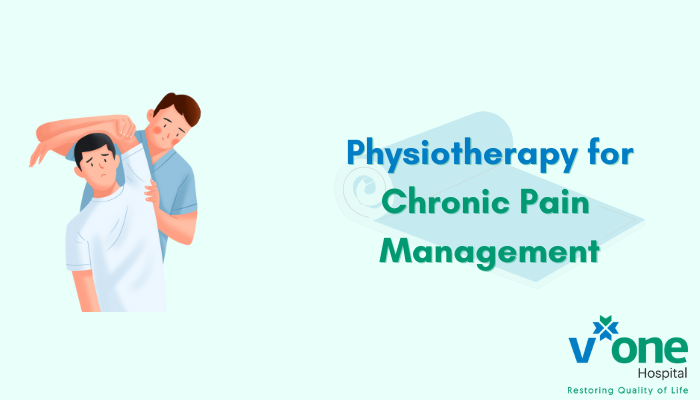Physiotherapy for Chronic Pain Management | Unlocking the Benefits
Chronic pain is something that affects millions of people around the world. This kind of pain is usually defined as any pain that lasts for a minimum of three months.
Living with chronic pain can affect your personal life, family life, and social life. It can also affect your lifestyle and is often associated with depression, hopelessness, helplessness, weight loss, and other disturbances.
What Causes Chronic Pain?
Chronic pain can be caused by various factors, including injury, surgery, diseases, and conditions that affect the nervous system. Although, the pathology is often unidentifiable.
Physiotherapy for Chronic Pain
While medication and surgery may be effective in some cases, physiotherapy is also an essential treatment option for managing chronic pain.
Physiotherapy, also known as physical therapy, is a treatment paradigm that focuses on the treatment and management of physical pain and disabilities through exercise, manual therapy, and education. The primary goal of physiotherapy is to help individuals restore movement and function, reduce pain, and improve their quality of life. It can also help prevent acute and painful conditions from developing into chronic pain.
In the context of chronic pain management, physiotherapy plays a crucial role in reducing pain, improving physical function, and promoting overall well-being. Physiotherapists are trained to assess the root cause of chronic pain and develop a personalized treatment plan that addresses each individual’s specific needs and goals.
Benefits of Physiotherapy for Chronic Pain Management
Given that chronic pain often does not respond to treatment directed at the pain, physiotherapy is more than just a last resort. Addressing the roots of your symptoms can help reduce pain and prevent reoccurrence.
Physiotherapy also has its applications in post-surgical pain management and pain management in cancer patients as soft-tissue mobilization helps limit subsequent shoulder dysfunction in breast cancer patients with axillary web syndrome. Exercise helps reduce side effects like chest wall pain and shoulder limitation for those who have had breast cancer treatment. It also helps with depression, sleep disturbances, fatigue, pain, and quality of life for patients with any type and severity of cancer regardless of treatment status.
1. Emphasis on Exercise
One of the most significant benefits of physiotherapy for chronic pain management is the emphasis on exercise. Physical activity is essential for maintaining good health and reducing pain. Physiotherapists work with patients to develop safe and effective exercise programs that improve mobility, flexibility, and strength. Exercise can help to reduce pain by promoting circulation, improving joint mobility, and increasing the release of endorphins, which are natural painkillers produced by the body. It helps prevent secondary complications of pain, like further weakness, immobility, and flexibility at the other joints.
Exercise should be incorporated at least once a day, but is best split into multiple 5-10 minute sessions. The stretches should be intense and other exercises are to be performed slowly until slight fatigue is felt. Some discomfort is expected, but it should not hurt too much.
2. Manual Therapy
In addition to exercise, manual therapy is another essential component of physiotherapy for chronic pain management. Manual therapy involves hands-on techniques, such as massage, mobilization, and manipulation, designed to improve joint and muscle function. It involves diagnosing and treating soft tissues and joint structures to modulate pain, reducing soft tissue inflammation, and improving tissue repair. Manual therapy can effectively reduce pain and stiffness, improve range of motion, and increase flexibility.
3. Education
Finally, education is an important aspect of physiotherapy for chronic pain management. Physiotherapists educate patients on pain management techniques, such as breathing and relaxation exercises, that they can use to manage their pain at home. They also provide patients with the tools and knowledge they need to continue to manage their pain effectively long after their physiotherapy sessions have ended.
Physiotherapy is a vital component of chronic pain management. It offers a range of treatments and techniques, including exercise, manual therapy, and education, that work together to help individuals reduce pain, improve physical function, and promote overall well-being.
If you are living with chronic pain, consider speaking with a physiotherapist to learn more about how physiotherapy can help you manage your pain and improve your quality of life.

